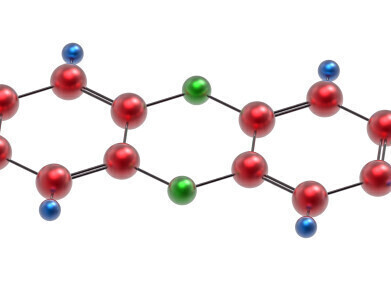GC-MS
Vibrational Smell Theory — We Have a Nose for It
Mar 16 2016
The ability to smell is an important part of how we, and other animals, make sense of the world. There are the obvious benefits of smell such as a warning sign against eating rancid food or to help hunt down prey in the wild. But odour also allows us to taste our food and acts as a key emotional trigger — often subconsciously.
But how do we smell? Perhaps a better question is ‘How do we detect odour molecules?’ The first stage is when the odour receptors in our nose — actually in the nasal cavity which is above and behind your nostrils — detect an odour molecule and the neurons transfer a signal to our brains. But how the receptors detect a molecule is not fully understood.
A recent article has added substance to the vibrational theory of olfaction — the lesser known of the two main olfaction theories. Let’s take a look at smell theory and see how bee’s brains have added to our knowledge.
Smell theory — lock and key or vibration
The theories of olfaction fall into two main camps — shape theory and vibration theory — with the shape theory of olfaction being the more established of the two. Although vibration theory is the oldest of the two, it was replaced as the main olfaction theory by the shape theory in the 1950s. As the name suggests, the shape theory of olfaction states that the shape, size and molecular structure of an odour molecule affects how it is perceived.
With the vibrational theory of olfaction, the odour of each molecule is determined by the frequency of vibrations in the bonds between the atoms in a molecule. The modern version of the vibrational theory is based on ideas proposed in the 1990s by Luca Turin — and use the tunnelling concept of quantum mechanics and relies on differences in energy levels in the receptor molecules. But the theory remains controversial — with many opponents failing to find any evidence for the theory.
Bees feel the vibes
Even so, adherents to the theory continue to look for evidence to support their ideas and a recent paper ‘Differential Odour Coding of Isotopomers in the Honeybee Brain’ published in Scientific Reports claims to have done just that.
A team from the University of Trento used four odorants in their standard and deuterated states — deuterated means that a hydrogen atom was replaced by a deuterium atom — and honeybees. The deuterated versions have the same shape as the hydrogen version, but different vibrational frequencies. By using a brain imaging technique, they were able to show that the bees responded differently to the deuterated odorants — suggesting that the different vibrations are responsible for the effects seen.
Chromatography is a technique commonly used to analyse odour molecules as discussed in this article from Chromatography Today, Evaluation of a new Dynamic Background Compensation Algorithm for Improving Aroma Characterisation by Thermal Desorption – GC-MS.
Image by Patrick J. Lynch, via Wikimedia Commons
Events
May 18 2025 Tempe. AZ, USA
May 21 2025 Birmingham, UK
Jun 01 2025 Baltimore, MD, USA
Jun 15 2025 Bruges, Belgium
Jul 14 2025 Kuala Lumpur, Malaylsia














